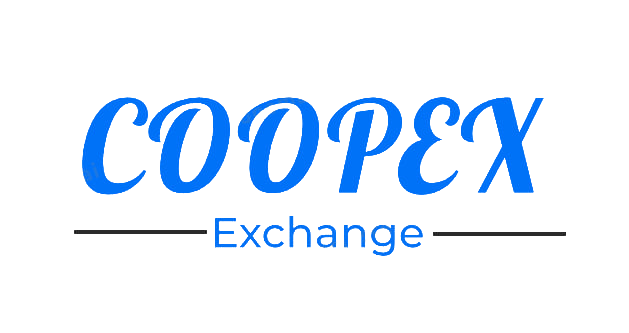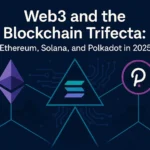Web3 is rapidly evolving into a multi-chain, decentralized infrastructure poised to redefine how the internet works. While thousands of projects contribute to this shift, three blockchain networks—Ethereum, Solana, and Polkadot—are leading the transformation.
Each network has carved a distinct role in the Web3 ecosystem, with Ethereum pioneering smart contracts, Solana driving speed and scalability, and Polkadot enabling interoperability. Together, they form a powerful triad shaping the next generation of digital interaction.
In this article, we’ll break down the key strengths of each platform, how they interrelate, and what their convergence means for the future of Web3.
Ethereum: The Foundation of Decentralized Applications
Ethereum remains the most established and widely adopted blockchain platform for decentralized applications (dApps), decentralized finance (DeFi), non-fungible tokens (NFTs), and DAO governance.
Key Features:
- Smart Contract Functionality: Introduced programmable logic to blockchains.
- Robust Developer Ecosystem: Over 500,000 developers globally.
- Ethereum Virtual Machine (EVM): A global standard for dApp development.
- Transition to Proof of Stake (The Merge): Increased scalability and energy efficiency.
- Rollup Ecosystem: Arbitrum, Optimism, zkSync and others reduce transaction costs.
Ethereum Statistics (2025):
| Metric | Value |
| Active dApps | 4,200+ |
| Total Value Locked (TVL) | $170B+ |
| Staked ETH | 34 million ETH |
| Average Tx Fee (L2) | <$0.01 |
Ethereum’s importance lies in its modular upgrade path and EVM compatibility, which has become a baseline for many Layer 2 and cross-chain projects.
Solana: Speed, Throughput, and User Experience
Solana was designed from the ground up for high performance. Its Proof of History (PoH) consensus mechanism allows it to process thousands of transactions per second with extremely low fees.
Key Innovations:
- Proof of History: Enables parallel processing of transactions.
- Sealevel Runtime: Allows multiple smart contracts to run simultaneously.
- Blistering Speed: 65,000+ TPS capacity.
- Low Costs: Avg. transaction fee < $0.001.
Solana Use Cases:
- DeFi protocols like Marinade, Orca, and Jupiter.
- NFT platforms such as Magic Eden.
- Games and real-time apps like Star Atlas and Drift Protocol.
Solana in 2025:
| Metric | Value |
| Avg TPS | 30,000+ |
| Daily Active Wallets | 3.5 million |
| NFT Volume | $2.8B |
| DeFi TVL | $18B |
Solana’s appeal lies in usability. Developers and users benefit from a fast, mobile-friendly experience. Its blockchain is lightweight enough to be integrated into mobile apps directly.
Polkadot: The Web3 Interoperability Engine
Polkadot offers a fundamentally different approach: it’s a layer-zero protocol that connects multiple blockchains (called parachains) into one unified network. It focuses on customization, scalability, and interoperability.
Core Components:
- Relay Chain: Polkadot’s heart, securing and coordinating parachains.
- Parachains: Independent blockchains optimized for specific purposes.
- XCM (Cross-Consensus Messaging): Allows parachains to communicate seamlessly.
- Shared Security: All chains benefit from Polkadot’s validator set.
Notable Parachains:
- Moonbeam: Ethereum-compatible smart contract platform.
- Astar: Multi-VM smart contract hub.
- Acala: DeFi hub with algorithmic stablecoin.
- Centrifuge: Real-world asset tokenization.
Polkadot Metrics (2025):
| Metric | Value |
| Parachains | 65+ |
| Monthly XCM Volume | 8 million+ msgs |
| DOT Staked | 600M DOT |
| Total Ecosystem TVL | $9.6B |
Polkadot’s architecture makes it ideal for enterprise adoption and regulatory-compliant networks that require isolated environments with shared security.
How They Interconnect: A Multi-Chain Vision
While each of these blockchains has a different design philosophy, their ecosystems are increasingly interconnected.
Cross-Chain Collaboration:
- Bridges: Wormhole (Ethereum ↔ Solana), Snowbridge (Ethereum ↔ Polkadot), Axelar (universal).
- Wrapped Assets: Users can move ETH or DOT to Solana or vice versa.
- XCM & IBC: Polkadot’s XCM and Cosmos’ IBC are shaping the standard for cross-chain dApps.
- Multi-Chain Wallets: MetaMask and Phantom now support EVM, Solana, and DOT chains.
Examples of Collaboration:
- Chainlink Oracles: Available across all three ecosystems.
- USDC: Native support on Ethereum, Solana, and parachains like Moonbeam.
- Interchain DeFi: dApps like Prime Protocol and Interlay support cross-chain lending and collateralization.
The vision of Web3 is not a zero-sum game. Interoperability allows platforms to specialize and share value.
Strengths Comparison Table
| Feature | Ethereum | Solana | Polkadot |
| Consensus Mechanism | Proof of Stake | Proof of History | Nominated PoS |
| Transactions per Second | ~100 (L1), 10k+ (L2) | 65,000+ | Varies (custom) |
| Interoperability | Via Bridges & L2s | Wormhole Bridge | Native (XCM) |
| Smart Contract Language | Solidity | Rust | Rust, Substrate |
| NFT Ecosystem | OpenSea, Blur | Magic Eden | Unique per chain |
| Developer Ecosystem | Largest globally | Fast-growing | Specialized, modular |
Challenges & Limitations
Despite their successes, each network faces specific challenges:
Ethereum:
- High Layer 1 gas fees.
- Complexity of rollup ecosystem.
- Transitioning to full sharding is ongoing.
Solana:
- Occasional downtime and outages.
- More centralized validator set.
- Smaller DeFi ecosystem compared to Ethereum.
Polkadot:
- Steep learning curve (Substrate framework).
- Less retail user adoption.
- XCM is still maturing.
These challenges highlight why inter-chain collaboration is essential. No chain offers everything perfectly—yet together, they can.
The Future of Multi-Chain Web3 (2025–2030)
As the Web3 stack matures, Ethereum, Solana, and Polkadot are expected to coexist as layers of a global decentralized network.
Expected Developments:
- Universal Account Abstraction: One identity for all chains.
- Unified Wallets: Multi-chain UX without switching networks.
- Cross-chain DeFi & NFTs: Trade assets without bridges.
- Composable Governance: DAOs voting across ecosystems.
- AI-powered dApps: Using Web3 as a back-end and AI as the interface.
The emergence of “omnichain” applications—those that work natively across multiple networks—will define the second generation of Web3.
FAQ: Ethereum, Solana, Polkadot & Web3
Q: Is Web3 limited to Ethereum?
A: No. Ethereum is a pioneer, but Web3 now spans multiple chains including Solana, Polkadot, Cosmos, and more.
Q: Can I use one wallet for all three?
A: Some wallets like MetaMask support Ethereum and EVM-compatible chains. Others like Rabby and Talisman are adding multi-chain capabilities.
Q: Which is fastest: Ethereum, Solana, or Polkadot?
A: Solana offers the highest throughput. Ethereum achieves scale via rollups. Polkadot allows parallel execution through parachains.
Q: Are assets transferable between these platforms?
A: Yes, via bridges like Wormhole, Axelar, and native solutions like XCM (Polkadot).
Q: Which platform is best for developers?
A: Depends on the goal. Ethereum for DeFi/NFTs, Solana for real-time apps, Polkadot for modular, scalable infrastructure.
Conclusion
Ethereum, Solana, and Polkadot are not rivals—they are allies in shaping a new digital paradigm. Each contributes uniquely to the multi-chain Web3 future, from smart contracts and speed to cross-chain orchestration. Together, they form a dynamic backbone for decentralized applications, financial systems, and data ownership models.
The next five years will likely witness the collapse of chain silos and the rise of composable, interoperable infrastructure—making the user’s chain of choice nearly invisible, and the experience seamless.

Herbert Vega is a blockchain and cryptocurrency expert with a passion for decentralized technology. He is the founder and CEO of XYZ Decentralized Exchange, a cutting-edge platform that allows users to trade cryptocurrencies in a secure and decentralized manner.




